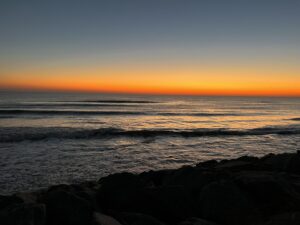Enjoy, admire, and observe wild dolphins exhibiting
Feeding or swimming with dolphins in the wild teaches them to approach boats, making the animals vulnerable to potential propeller strikes, fishing gear entanglement, ingestion of foreign objects, or intentional harm from humans.
Slow your boats in known dolphin habitat.
A dolphin’s fear response to a following or speeding boat may cause separation of a calf from its mother or the division of a bonded social group.
Have faith that while they may show an interest in your food dolphins are actually excellent predators and are able to feed themselves with appropriate food items.
Wild dolphins are just as trainable as the dolphins at Marineland. When reinforced for a behavior (like approaching a boat) with a favorite treat (like your discarded bait), they will quickly learn to chase boats and beg for food which dramatically increases their likelihood of being involved in a boat strike or ingesting fishing hooks.
Minimize your use of plastics and keep the beaches and seas debris-free.
Every piece of plastic ever produced still exists on the planet! While plastic is not biodegradable, it is photodegradable which means that while floating in the water or sitting on the beach under the sun’s rays, the plastic will become brittle and break up into bite sized pieces that may resemble fish or other prey items.
By reducing your waste and picking up inappropriately discarded waste items, you’re reducing the chance that a dolphin will become entangled in, or ingest, trash.